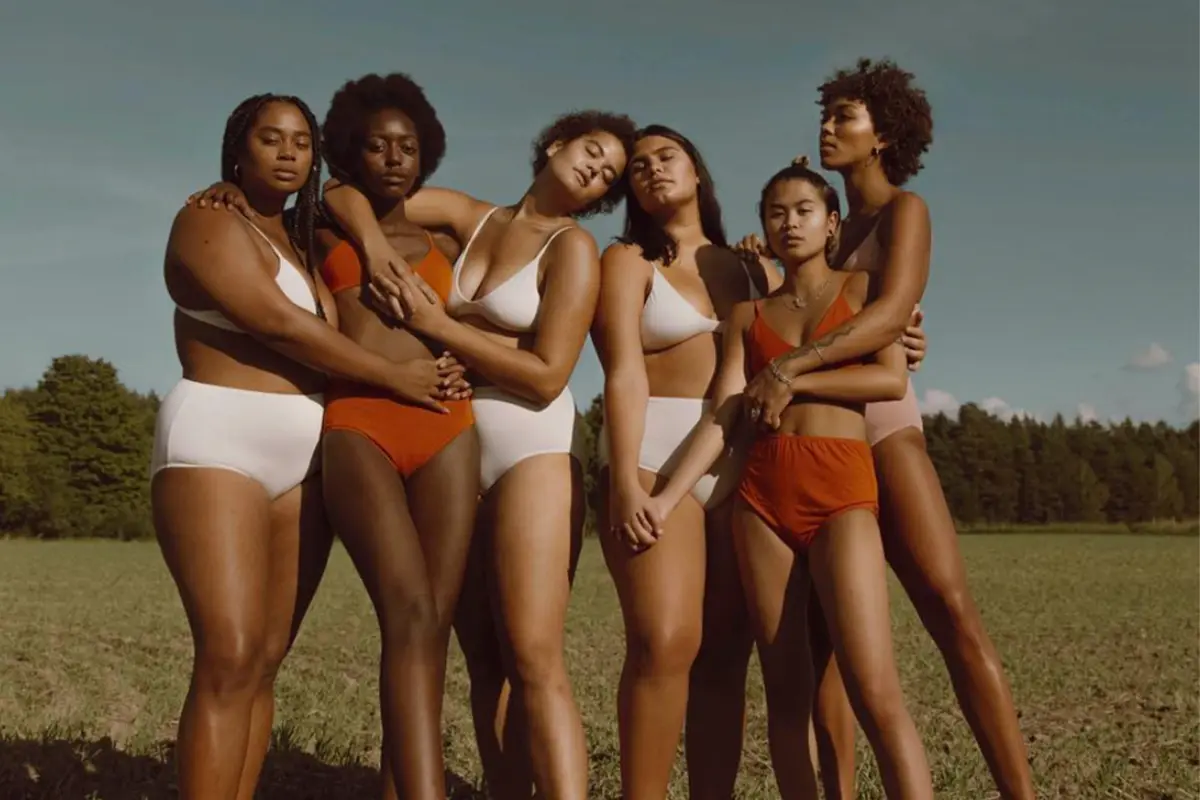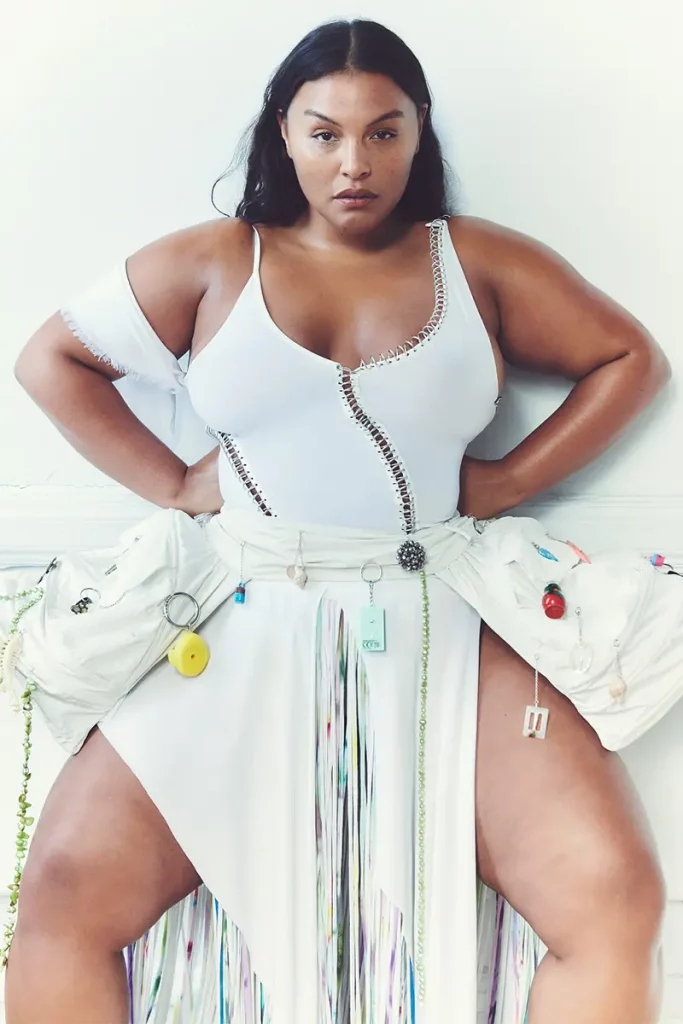The last few seasons have confirmed this, after a wave in which the trend was the representation of everybody the fashion returns to extremely slim bodies, normo-typed and stereotyped
Rise and fall of diversity and inclusion in fashion system – the inclusion of curvy looks
It is hard to imagine change for a world in which the lifestyle portrayed is unhealthy and associated with unachievable ideals of beauty. Yet fashion in the past decade has de-constructed the aesthetic canons it has been championing to embrace the inclusive model of body positivity following tolerance and diversity. Symbolic of this is the fall of empires such as Victoria’s Secret or Abercrombie and Fitch that have advocated for these unnatural standards.
The documentaries White Hot: The Rise and Fall of Abercrombie and Fitch and Victoria’s Secret: Angels and Demons show the implosion of these systems based on violence, mistreatment, and constraint. Somewhat, this wave of representation of bodies and cultures beyond stereotypes has been short-lived, fading almost completely in recent seasons and presentations. The human diversity in casting had allowed the industry to become the bearer of a contemporary fashion idea, placed alongside current cultural values.
Now the body positivity movement and the belief in bringing together every body type by representing a wide range of the population has turned into the inclusion of a few curvy looks, little variety of ethnicities, and the selection of famous top models from the body positivity era such as Ashley Graham or Paloma Elsesser.
The Vogue Business Spring/Summer 2024 human diversity – size inclusivity report
Just to follow up on the latest Spring/Summer 2024 runway show series, Vogue Business created a report regarding inclusivity in the sizes that walked the runway. The published piece presents the results obtained by analyzing in its entirety relevant shows and presentations from last season.
The analysis is based on the cities of New York, London, Milan and Paris for a total of 250 shows. Plus size representation made up just zero point nine percent of the SS24 looks reports one of the charts, with ninety-five percent being straight sizes models. Having the most inclusive castings are the younger and independent labels, this the confirmation already from the last edition of the report.
Karoline Vitto and Chopova Lowena are the brands that stand out in terms of representation with looks that were either mid-size (US 6-12) or plus-size (US 14+), highlights the report. «Mid-size model Paloma Elsesser walked in all four cities this season», states the report. She told Vogue she was hoping her absence last season would have opened up opportunities for other mid- and plus-size models, but given a new penchant for thinness she attended to increase the level of representation.
«Every fashion week we [plus-size models] want to be a part of it; we want to add something new to the industry», explained plus-size model James Corbin. «I expected to walk shows in London, but that didn’t happen. Not many shows were inclusive enough to have a plus-size male model».
The systemic problem of sizes in fashion
Sinéad O’Dwyer, who walked the runway in London, the city with the highest percentage of inclusivity according to the report, takes second place in the ranking created by Vogue Business for FW2023. Having chosen an alternative fashion show method, she was not analyzed in SS24, but she commented on the issue related to human diversity by focusing on education.
«When you go to study fashion, you are already given the body you will have to draw for. The mannequins are a certain size, as are the blocks on which the models are based. Of course you can create your own blocks, but with so many deadlines and so much pressure to create innovation in terms of creativity in a very short time, do you have to?» he told Vogue Business. «It’s strange because fashion, as a creative art, is so body-centric, but the first creative decision you make about the body you choose to design for has been taken out of the equation», Sinéad O’Dwyer concludes in the quoted piece.
Body positivity does not mean size positivity, it means tolerance and diversity
The body positivity movement was born in conjunction with the feminist struggles of the Sixties and Seventies, starting with the Fat Acceptance movement. The abolition of socially imposed canons and stereotypes later materialized with a broader spectrum in the Nineties. The founding of the Body Positive Movement starts with Connie Sobczak and Elizabeth Scott, reflecting primarily on eating disorders.
The project, however, cannot be reduced to a question about size, both in fashion and in everyday life. Encouragement starts with acceptance of human diversity – accepting that every physical characteristic whether it is race, gender, disability, particular physical features or religious beliefs that place rules on the body’s approach to the external environment. Again, the fashion world neglects to embrace this variety that characterizes reality in order to offer fictional catwalks.
Representation of BIPOC in fashion sphere
Regarding the BIPOC, Black, Indigenous and People of Color community, fashion is lacking in terms of representation of both race and culture. Although some casting for fashion shows or shoots have opened up to ethnic variations on the model theme, other creatives in the fashion world belonging to the community are overlooked.
One only has to think of the recent controversy that arose after the appointment of Seán McGirr as creative director of Alexander McQueen, with this appointment Kering has in fact completed the picture of the main directors of the group’s maisons being all men and white. To stay on the topic of designers, fighting against the fading trend of diversity is Michelle Francine Ngonmo who founded Afro Fashion Association in 2015.
This has since resulted in the creation of Afro Fashion Week Milan and the Black Carpet Awards, which are able to promote the talents of the BIPOC community and propose a narrative that embraces all points of view. Even the clothes on the runway are designed according to a white normativity, as Syeda Tanveer Ahmed explains in the research Pluriversal Fashions: Towards an Anti-Racist Fashion Design Pedagogy.
«The results of the analysis of design school sketchbooks showed how a dominant two-step design tactic is employed in the fashion design process to construct racist and sexist representations by decontextualizing and then recontextualizing differences», the pedagogue points out. Again, the relevance of studies in inculcating these methodologies away from cultural pluralism and design is reiterated.
Modest fashion: when religion plays a central role in dressing
There are some women who by cultural or religious choice cover their bodies almost entirely with their clothes, which are broadly made and not fitted, thus defining the concept of modest fashion. This is considered in the industry to be a productive niche, and therefore finding designers to enter this world is not easy among renowned brands.
Hussein Chalayan in his Spring Summer 1998 collection had investigated some of these issues by having six models wearing burqas on the runway. Named the Burqa Show, the collection raised controversies and debates that still exist about Muslim women’s clothing, questioning identities and different ways of covering the body.
Few other isolated cases have followed this attempt at inclusion, tolerance and diversity or at least reflection, relying on the faces of well-known models such as Halima Aden, among the first to pose in burkini and hijab walked the runways of Alberta Ferretti, Tommy Hilfiger, and Max Mara.
Inclusivity amongst LGBTQIA+ community: the depiction on the catwalks beyond gender
One community that fashion cares to support is the LGBTQIA+ one, but does representation go beyond Pride month marketing? The tendency to move beyond gender-dictated binarism is evident in the pieces in contemporary collections, with some brands championing genderlessness and others including these garments sporadically.
In recent seasons, co-ed shows have also declined, returning to the sharp division between Men’s and Women’s Fashion Weeks. There are few moments of concrete representation on the runway, transgender models being the exception of choice in casting and not the rule. The same holds true on the designer side as well, the first transgender designer to walk the official New York calendar was Pia Davis in the near 2019.
Among the voices promoting change in today’s landscape: Mimi Tao, Laith Ashley and Teddy Quinlivan, trans models who have appeared in shoots and sometimes on runways, and Gogo Graham who designs clothes for the community with a focus on trans women’s bodies.
The major experiences mentioned above had a major impact between 2019 and 2021. Today there is a struggle again, in large brands in particular, to give visibility and support to the community through castings that are open to all models belonging to the LGBTQIA+ group, not only including well-known names in the star system such as Hunter Schafer.
The only people with disabilities allowed: good looking, creating a stir or nepo-baby
A report by UNICEF and WHO estimates that by 2050 there will be 3.5 billion people in the world with developmental disabilities, chronic and age-related diseases, reports healthdesk.co.uk. Yet in the cultural and, in particular, the fashion industry, representations are lacking and often stereotypical. Relegated only to visible types of disabilities, leaving out part of the community.
It is common on the runways to see normo gifted bodies and, often even in the case of disability, the inclusion of certain models, perhaps one per fashion show, becomes a matter of moral duty to show. «My experience as a disabled model in the fashion industry has been anything but easy. The image of a disabled person and their body in high fashion is almost nonexistent.
As a model who is disabled and is pushed toward high-fashion clients/runway, it can be very hard having conversations about inclusion and the importance of seeing people with disabilities in major fashion campaigns, editorials, and runway shows», Aaron Philip explained to Who What Wear.
Other cases of models with disabilities being invited to walk the runways of well-known luxury brands are related to the notoriety they have gained, as in the case of Winnie Harlow. Same with nepo-baby Lila Moss, one would have to question how much her presence in the fashion sphere is related to her image and inclusion compared to people with diabetes or her mother’s fame.




















